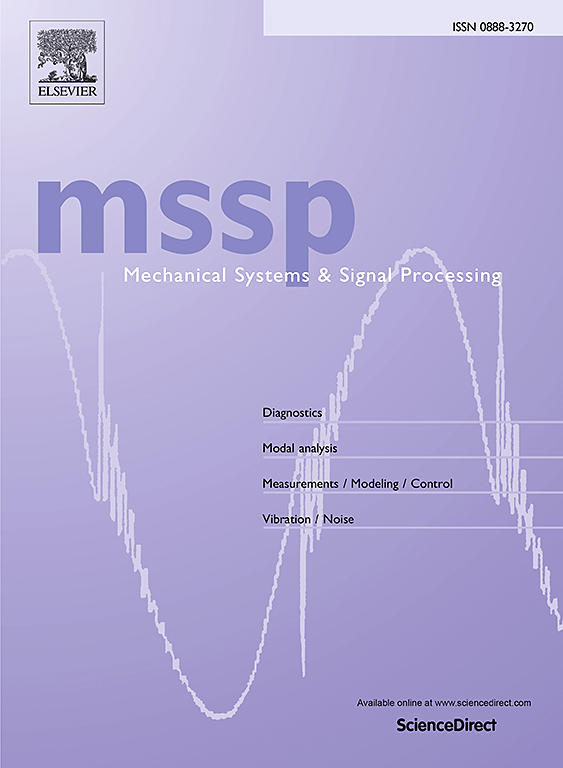Variable step identification of resonance frequency for percussive ultrasonic drilling based on wavelet decomposition
IF 8.9
1区 工程技术
Q1 ENGINEERING, MECHANICAL
引用次数: 0
Abstract
In order to accomplish the in-situ exploration mission on the surface of asteroids, the probes rely on anchoring mechanisms for reliable attachment. Percussive ultrasonic drill characterized by low drilling pressure and energy consumption is suitable for anchoring environments with weak surface gravity. In order to improve the anchoring efficiency of percussive ultrasonic drill on asteroid surfaces, this paper proposes a fast resonant frequency identification method with variable step scanning based on wavelet decomposition. The series resonant impedance and phase angle of the percussive ultrasonic drill are compared for stability under different conditions, from which the phase angle with higher stability is selected as the judgment for the resonant state. The impedance detail waveform and the phase angle approximation waveform are extracted by the wavelet decomposition, which are applied to adjustment of the frequency step and the judgment of the resonance state, respectively. A variable frequency step scanning algorithm adjusted with phase angle, impedance, and scanning speed is designed based on the investigation of the minimum time step and the maximum frequency step allowed for ultrasonic drill frequency scanning. The experimental results prove that the proposed variable frequency step scanning algorithm and the traditional fixed frequency step scanning algorithm have the same resonance identification results for percussive ultrasonic drill. When the initial frequency differs from the resonant frequency by 39 Hz, the proposed variable frequency step scanning algorithm reduces the identification time from about 5 s to less than 3 s.

基于小波分解的冲击式超声钻孔谐振频率变步长识别
为了完成在小行星表面的原位探测任务,探测器依靠锚定机构进行可靠的附着。冲击式超声钻机具有钻压低、能耗小的特点,适用于地表重力较弱的锚固环境。为了提高撞击式超声钻在小行星表面的锚定效率,提出了一种基于小波分解的变步长扫描快速谐振频率识别方法。比较了冲击式超声钻在不同条件下的串联谐振阻抗和相位角的稳定性,从中选择稳定性较高的相位角作为谐振状态的判断依据。通过小波分解提取阻抗细节波形和相角近似波形,分别用于频率阶跃调整和谐振状态判断。在研究超声钻频扫描允许的最小时间步长和最大频率步长的基础上,设计了一种可调节相角、阻抗和扫描速度的变频步长扫描算法。实验结果证明,本文提出的变频步进扫描算法与传统的定频步进扫描算法对冲击式超声钻具有相同的共振识别结果。当初始频率与谐振频率相差39 Hz时,所提出的变频步进扫描算法将识别时间从5 s左右缩短到3 s以内。
本文章由计算机程序翻译,如有差异,请以英文原文为准。
求助全文
约1分钟内获得全文
求助全文
来源期刊

Mechanical Systems and Signal Processing
工程技术-工程:机械
CiteScore
14.80
自引率
13.10%
发文量
1183
审稿时长
5.4 months
期刊介绍:
Journal Name: Mechanical Systems and Signal Processing (MSSP)
Interdisciplinary Focus:
Mechanical, Aerospace, and Civil Engineering
Purpose:Reporting scientific advancements of the highest quality
Arising from new techniques in sensing, instrumentation, signal processing, modelling, and control of dynamic systems
 求助内容:
求助内容: 应助结果提醒方式:
应助结果提醒方式:


